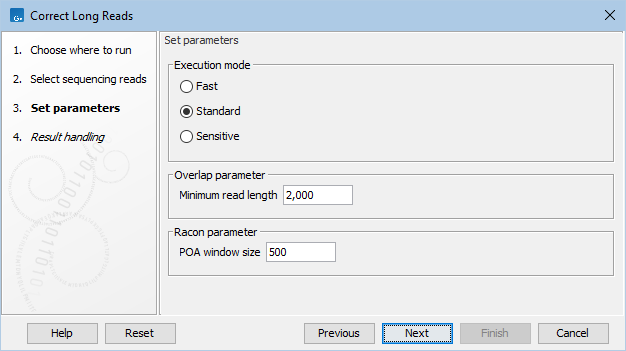Correct Long Reads
The Correct Long Reads tool enables the correction of a set of error-prone long reads by finding overlaps between the reads, and performing a consensus error correction using Racon [Vaser et al., 2017].
Note that if the aim is to create an assembly from a set of error-prone long reads it is not recommended to run Correct Long Reads prior to De Novo Assemble Long Reads. For other applications, however, it may be beneficial to correct the reads before further analysis.
To run the Correct Long Reads tool, go to:
Toolbox | Long Read Support (![]() ) | Correct Long Reads (
) | Correct Long Reads (![]() )
)
Select one or more sequence lists containing reads.
In the next dialog, set the following parameters (figure 7.1):

Figure 7.1: Correct Long Reads parameters
- Execution mode.
- Fast. An overlap mapper computes overlaps using a coarse all-to-all sequence alignment, prior to running Racon. This option will use the least amount of memory.
- Standard. Similar to the Fast , but with a higher sensitivity.
- Sensitive. Minimap2 is used to compute a more precise all-to-all sequence alignment prior to running Racon. This option should only be used for low-coverage datasets.
- Minimum read length. Reads shorter than this value will not be included in the correction process.
- POA window size. The window size for which Racon computes partial order alignments (POA). A larger window size enhances the ability to capture more global structure during the polishing process, but it also increases the memory requirement.
Subsections
